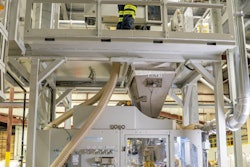
Employers must set a good example of safety culture for their employees
Good farm safety standards are based on communication, training and by setting a good example, according to a panel of experts who spoke during the American Farm Bureau Federation’s Virtual Convention.
“From a safety culture standpoint, communications, training and leading by example are critical parts of it,” said Jess McCluer, vice president of safety and regulatory affairs at the National Grain and Feed Association.
Megan Goodspeed, research assistant for the Northeast Center for Occupational Health and Safety in Agriculture, Forestry and Fishing, said employers need to set a good example for their workers, but also reinforce best practices.
“The owner-operator needs to be leading by example. If they’re not operating safely, then they can’t expect their employees to operate safely,” she said. “Not only making safety a priority, but also visually present – having those safety posters around the farm, having those proper handwashing etiquette posters around handwashing stations. I feel like those reminders are very important.”
Brian Little, chief operating officer for the Farm Employers Labor Service in California, added that it is important for employers to communicate to employees in the language they best understand and to keep them informed on any regulatory or rules changes that affect them.
“You can’t really accomplish safety in the workplace without having your employees bought into it and without a level of management commitment,” he said.
Chalmers Carr, president of fruit and vegetable grower Titan Farms in South Carolina, said employers must communicate with individual groups of workers regularly – weekly, if not daily – and include two-way engagement with open dialogue.
Positive, lasting effects of pandemic
Carr said that, while the COVID-19 pandemic brought additional challenges, it also increased the level of communications at his operation, something he expects to continue even after the pandemic ends.
COVID-19 “has increased our communication, it has changed the way we go about communicating, it’s really opened up that door back and forth for feedback and, for us, what it did through the whole course of it was we kept changing our practices based on what our employees were telling us,” he said. “We had communication; I would just say it’s much more robust now going forward and I think that will stay with our operation.”
Little added that another positive arising from the pandemic is that employees may be more willing to use paid sick time when they are ill instead of trying to continue to come to work and risking the spread of illness in the workplace. He also said he expects to continue to see increased use of hand sanitizers and face coverings in food handling post-pandemic.
“In the long run, there are a lot of things about COVID-19 that were challenging to a lot of people, and then a lot of people had to change their practices, but I think a lot of those practices are going to wind up enduring once we get past this,” he said.
















